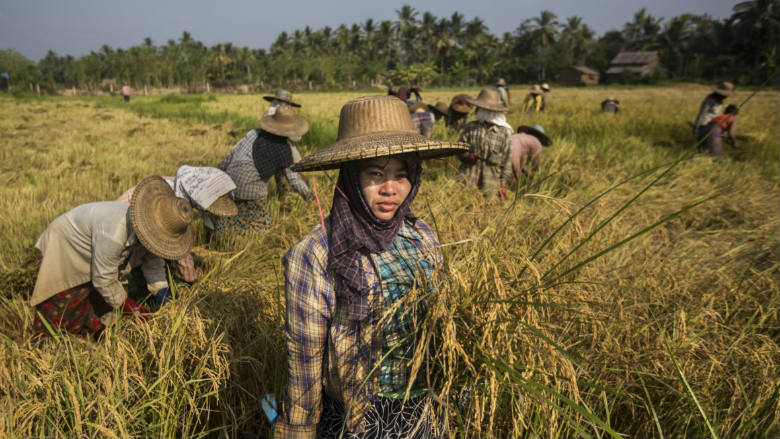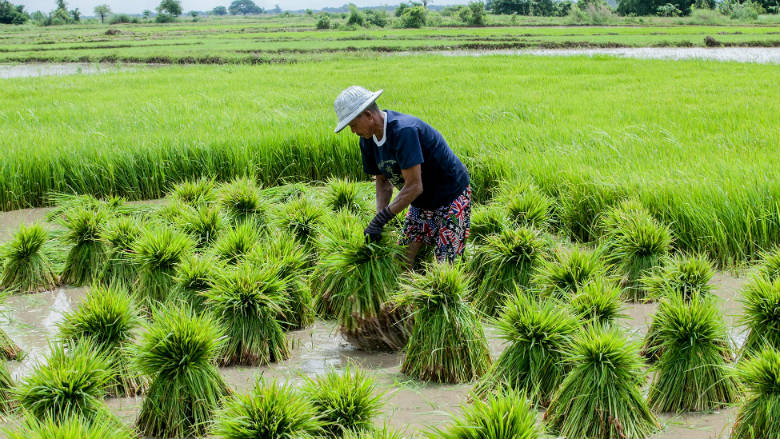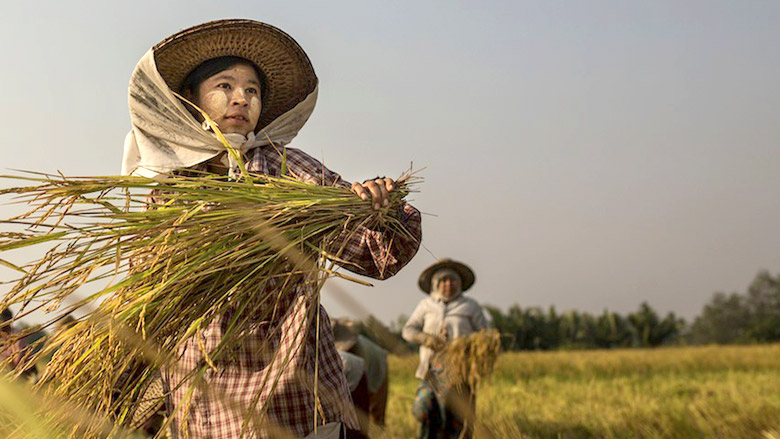It is harvesting time in the fertile Ayeyarwady river basin, which means that the majority of able-bodied men and women in this village are busy in the paddy fields.
They have to act fast to harvest the grains before the sea level rises and floods the land. Depending on the demand, each worker can earn, on average, 50,000 Kyat ($41.80) per acre.
Farmers are excited about this year’s yield. In the village teashop, people are talking about the doubling of sticky rice price. It is not common for people in Myanmar to eat sticky rice and it is largely exported to neighboring countries, like China.
Farmers who have harvested their paddy fields claim this is the best year, a result of favorable weather conditions and better farming techniques and practices they’ve learned through NGOs who, with funding from the Livelihoods and Food Security Trust Fund (LIFT), provide farm advisory services on how to increase yields and improve crop health.
The Ayeyarwady region is the rice bowl of Myanmar, but it is highly vulnerable to the impacts of climate change. Water drainage, salt intrusion and flood protection are major concerns.
In recent years, rising sea levels have intensified the encroachment of seawater, which increases soil salinity and decreases monsoon rice paddy yields. Growing sticky rice as a summer crop has helped rice farmers in the Ayeyarwady cope with this problem, as sticky rice plants are more resilient to salt intrusion. The ability to harvest two crops instead of one significantly increases local farmers’ income.



